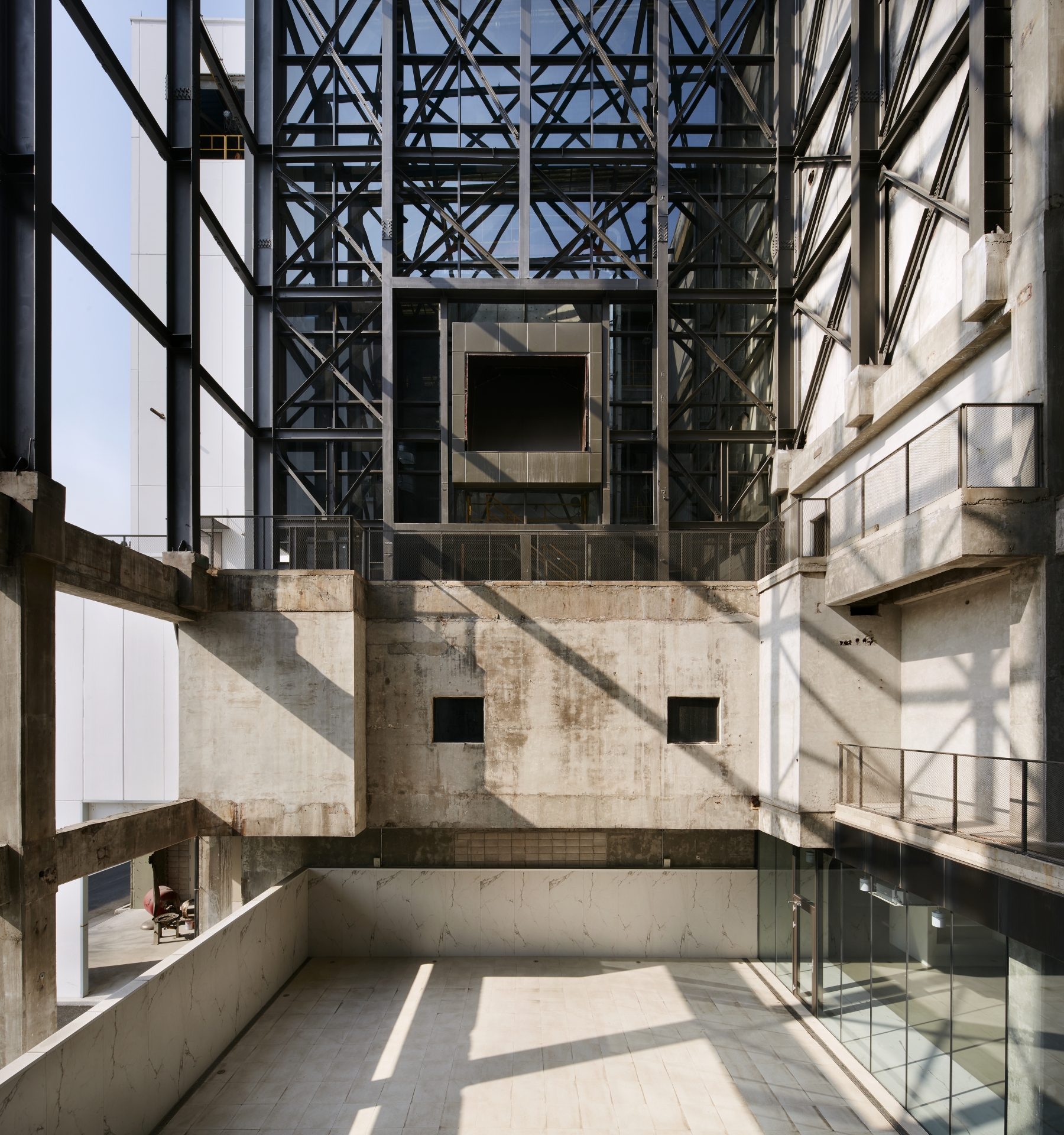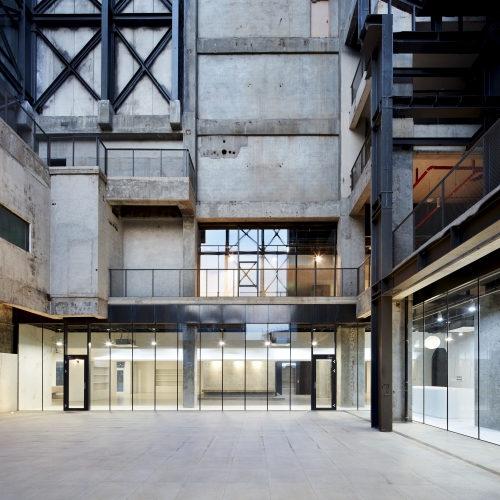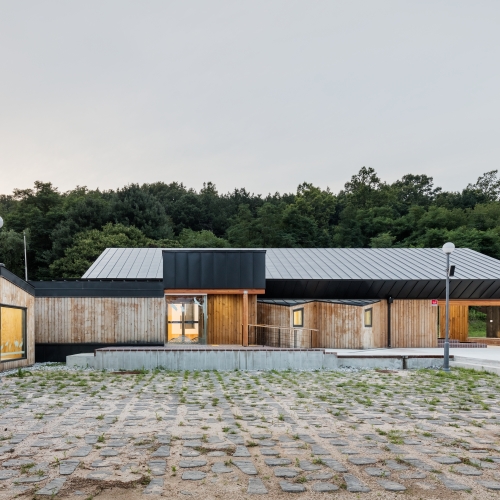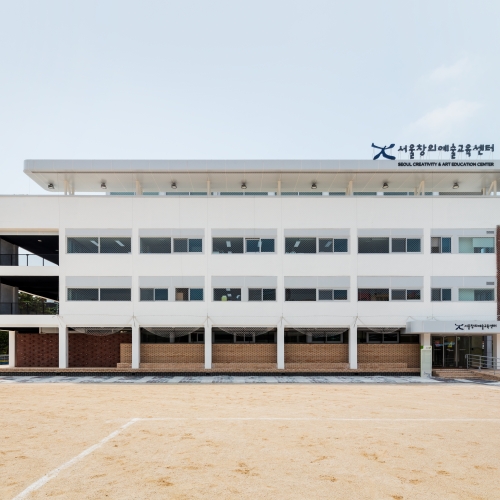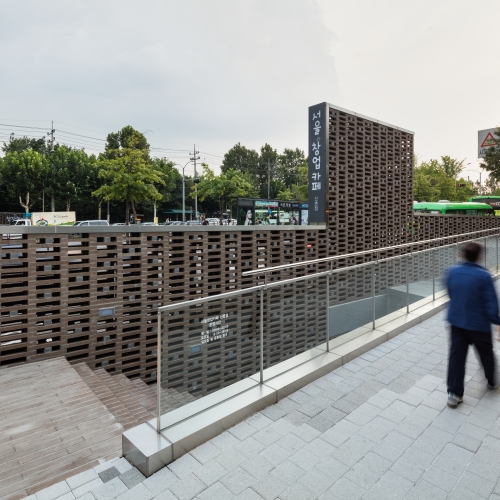The era of urban revitalization has begun. Debates on architecture have moved on to debates on urban cities, and consideration of the humanities has become even more important in such debates. As urban revitalization is inclusive of a wider group of relevant individuals than architecture, it is more political, and its political structure is more complex than the construction of a new city. Ideally, urban revitalization may be pursued via a linear process, but ultimately it takes a non-linear path with countless obstacles that make one take detours that either lead to unexpected success or failure. It is also unclear where responsibility lies. Perhaps the entire process is part of a larger process to make it unclear where responsibility can be placed. Partly, this can also be seen as where divergent processes come together into the ambiguous mishmash that one describes as cooperation. A revitalization project may be deemed successful, but it may turn out to be too early for such a judgment, and because it often does not lead to a higher level of satisfaction among its participants, urban revitalization projects may all actually turn out to be failures. This is especially the case when the participant’s evaluation and external observer’s evaluation cannot help but be different due to their subjective interpretations of success. Hence, urban revitalization that arises from such precarious and low-return situations may also be compared to a hopeless venture looking for an exit in an enclosed loop.
About 20 to 30 years before urban revitalization became a hot issue, many Korean architects were discussing the old cities more than the new and were more interested in themes regarding sustainability, revitalization, and discussions of urban regionality and memory than debates on progress and growth. Many architects of the earlier generation already conducted forums on ‘what this land is’ in terms of its regionality and identity.
Let me describe how this journey has developed in a rather quick and sketchy manner:
Along with the primary focus on development, Korean architectural society of recent years was in a hurry to catch up with the topics dominating discussion in the western hemisphere. It experienced the Le Corbusier trend, represented by concrete of the 1960s and 1970s, and a transition period in the 1980s as it moved onto the Alvar Aalto trend, represented by brickwork. However, for some strange reason, Korean society skipped over the sudden rise of western postmodernist style in the mid-1980s. This was an era in which the Independence Hall strangely became the starting point and the destination for discussions on postmodernism. During this time, the National Museum of Contemporary Art in Gwacheon and Seoul Arts Center were built. I would like to refer to this era as the time of granite. Moreover, between the two paths of radical deconstructionism in the 1990s and more sentimentally driven (?) regional criticism, deconstructionism made its fleeting appearance and disappeared suddenly like a passing sensation. Regional criticism had greater lasting power. The western deconstructionist architects – who were distant and radically progressive – were already designing buildings in Korea from the late 1990s, and their architecture appeared to be closer to a dissolved or a liquidified modernity than deconstructionism. This appearance soon settled down into a style, integrating with the capitalistic turn-key architectural culture of the 2000s, and it seemed to dismantle numerous public architectures into radical CGs and disappointing constructions. In contrast, however, western and Japanese architects, who were labelled under the practice of regional criticism, entered Korea relatively inconspicuously as they were mostly designing private buildings for wealthy individuals. It may be said that it is an era-phase that sought progressivism for public and corporate buildings and the retrospective sentiment in the private sector. Nowadays, however, this sentimentalism and retro culture is being applied everywhere, regardless of whether they are a public, corporate, private, or government-led projects.
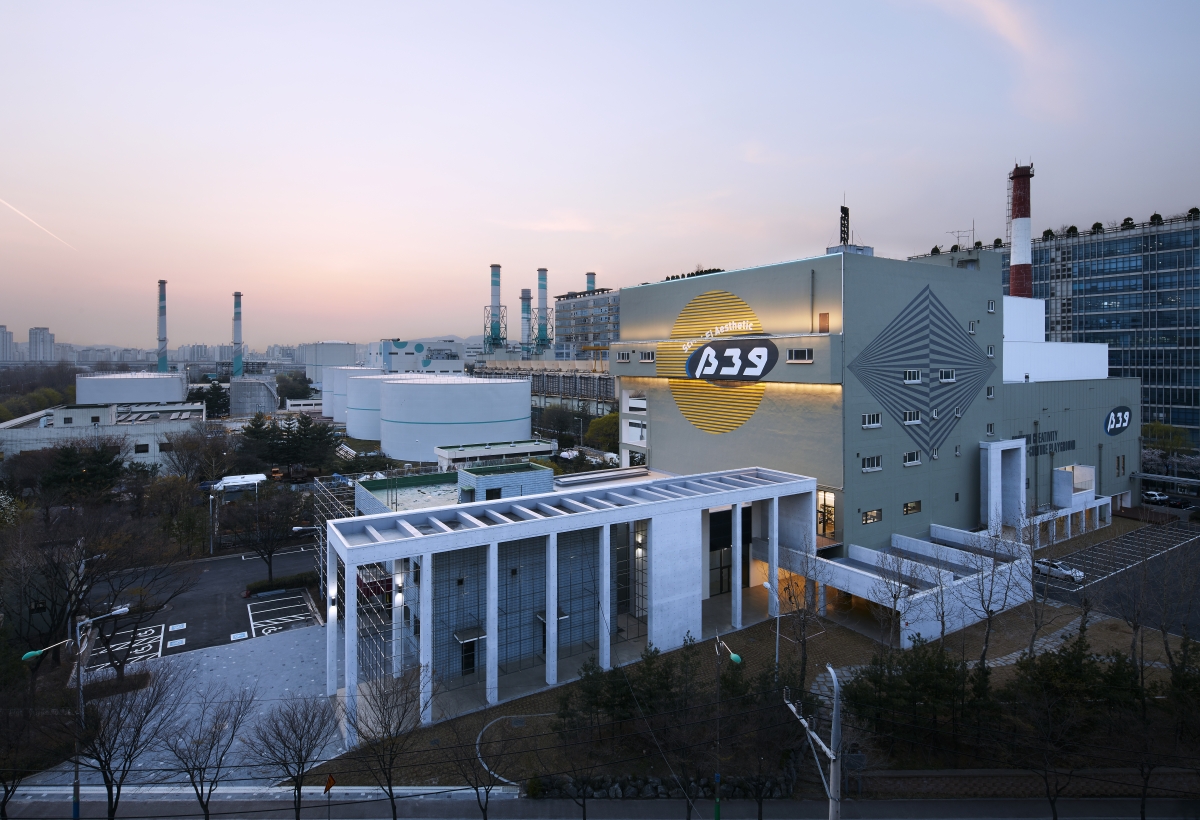
Bucheon Art Bunker B39_ The architect connected the management building, which was randomly situated in front of the massive incinerator plant, into a series of structures and added a layer of entrance flow line to it. This layer faces off the main road and announces the forthcoming transformation of the incineration plant. ⓒKim Youngkwan
Nevertheless, Korean architects, who were actively engaged in broader discussions, have continuously kept an interest in the old cities rather than the new for about 20-30 years, that is, until now. Of course, it should not be misunderstood that the new cities were inevitably part of mainstream Korean culture during this time. The primary driving force of that debate emerged from regional criticism.
However, it is truly ironic that a major or a mainstream debate on urban revitalization is becoming an issue in this era, when the height of this critical discourse has passed. Is it possible to have regional criticism in this non-critical era? Instead of becoming the property of an architect, or becoming a unique regional property, won’t regionality be consigned to the general term ‘regional style’ by simply jumbling up the architect and the approach to regionality together? What I mean is, is it possible to bring about a situation where there are no architects or no regions? In such a situation, without the ability to critique, can a debate on urban revitalization take place? It is widely perceived nowadays that no one dedicates their time to debating the issues of regional criticism. Hence, this text itself may be strange. It is also well-known that the discussions on regionality have attached themselves under the debates on communities. However, if one investigates the reality of such communities, one can see that the settled communities have all almost dissolved to retain only its past regionalized appearances, and that the region is currently depending merely on a wandering, anti-aesthetic, nomadic community. However, it is also true that this nomadic community is dependent again on a sense of regionality, and because discussions on community ultimately fall into an infinite regress, I could not but be driven to investigate the region and the critique once more. In this way, my questions keep expanding as they go backwards.
In these circumstances, where the critical function has been lost, all architectural discussions became reduced from a discussion of debate-level arguments to a mere exchange of personal opinions. Because of this, architects have come to rely on the urban humanities for a more meaningful discussion. The humanities, including the urban humanities, have thus become very significant to urban revitalization. However, it is also true that the humanities too have lost their critical function and have been reduced into either practical self-improvement classes or the mere sharing of personal opinions. For this reason, I find this era inexplicably strange: it is like a world of ghosts that float around, going after each other’s tails in a circle while embodying no linguistic essence of their own. It is similar to what Niklas Luhmann described: people are not engaging in conversations, but conversations are engaging in conversations by themselves.
It is impossible to not recall that aforementioned granite era that was randomly skipped over. Not to go into debates on any ‘-isms’, however, I find it impossible to not describe all these processes and situations as postmodern. Is it because we skipped over that debate that we have become unaware or susceptible to this situation? Would it have been the same even if we did engage in that debate? I’m not sure. What is interesting, however, is that generations who have not experienced critical debates are starting to become active in this era of urban revitalization. Sometimes, I come to wonder if this is for the best.
But why am I droning on about these things when I’m supposed to be introducing my project? That is even more strange. As a susceptible being who cannot but keep tread over the same old path over and over, I came to introduce myself in this manner.
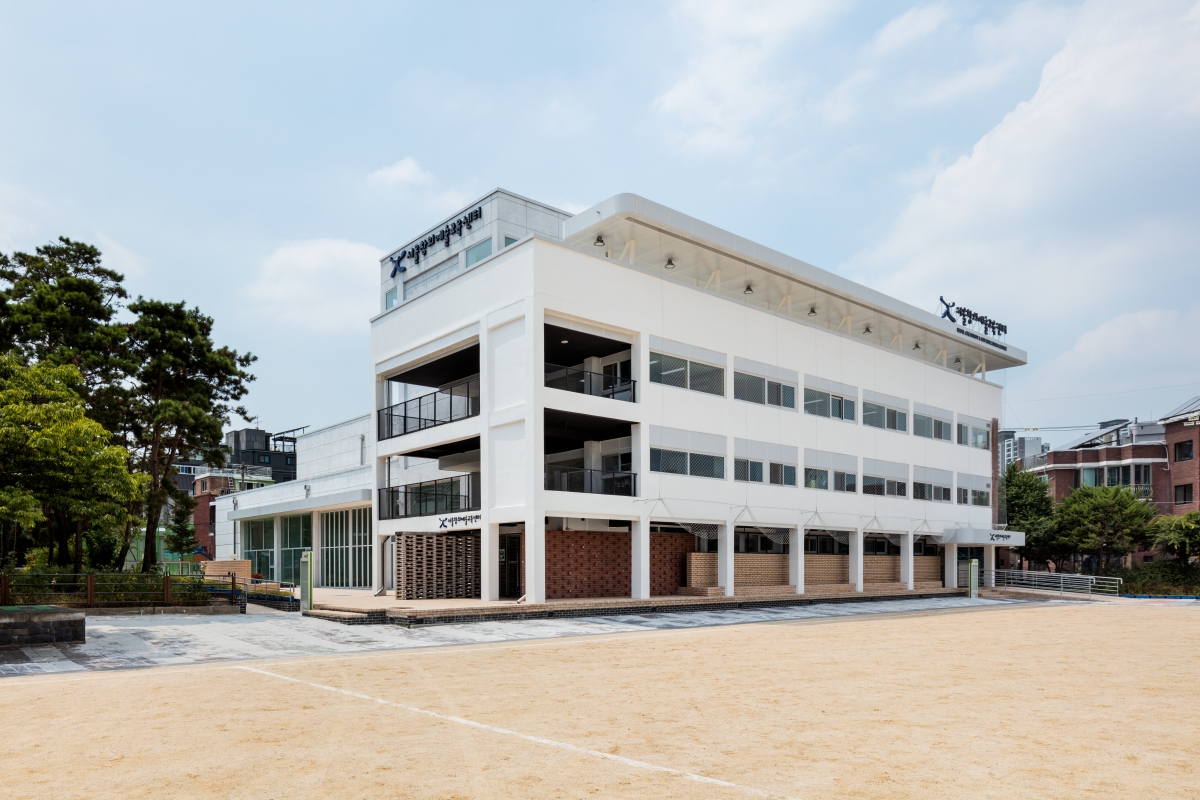
Seoul Creative Art Education Center_ The architect decided to revive the horizontally long windows, making an extension by continuing the concrete rahmen structure.
The ‘retro-‘ culture looks like the only answer to this future-less contemporary era. What is not ‘retro-‘ is no longer new or familiar. This is because the essence of the retro culture is to appear as new and familiar.
Modernism retro—not modernism—is also being revived, as though it is not a part of postmodernism. Whether it is of the recent or distant past – whether it is a past future or a recent futuristic style – they are all revived as retro. The aesthetics of emptiness, extravagance, and simplicity are not new but retro. I’m not hoping to raise a pointless debate between modernism and postmodernism. From the start, postmodernism has been a part of modernism in that it is simply modernism but minus the Enlightenment. Also, I argue that the two have become so alike that they no longer refer to anything specific. Hence, it is impossible to debate something that is nothing.
I had conducted a research project entitled ‘Jeju Phenomenon’ in 2014 with my colleagues from CurtainHall (Jaewon Cho, Manager Seunghoi Koo). The task was to research the urbanization phenomenon also referred to as the ‘Jeju fever’ that took hold in Jeju over the 10 years since 2014, and if I was to describe it simply with just the keywords from the research conclusion, the research was about ‘utopia (island and dream) the foreign (new) the recent past (familiarity)’ and ‘emulating nomadism and settlement simultaneously’. The background to the movie ‘Architecture 101’, that was a hit in the press, was not Jeju by coincidence. ‘Architecture 101’ offered an imaginary escape from the past (utopia). The keyword of the project is related to the simultaneous and integrative pursuit of progress that wishes to drive ahead and escape the conservativeness that wishes to drive us backwards to remember. Incapable of staying at rest, it seemed that our society was conducting both forward and backward motions simultaneously and was becoming rapidly flattened as a result. These movements become shared across various forms of SNS, and they become even flatter through multiple sharings. Many of the Facebook users have now moved onto Instagram. The numerous personal stories on Facebook have started to disappear, as though they were nothing but a background noise, and it seems that they will soon all disappear. The political left and right have become so flattened that they no longer have any individual identity. The description of the world in Robert Walser’s short story ‘Two Strange Stories’ where he writes ‘Even God has been deconstructed...and even the last brinks upon which we could define and colour nothing as something have disappeared’, and his description of an ever-hungry man who has to keep eating and tasting something which is nothing at all in his story ‘Nothing at All’ are rather relevant to these current times.
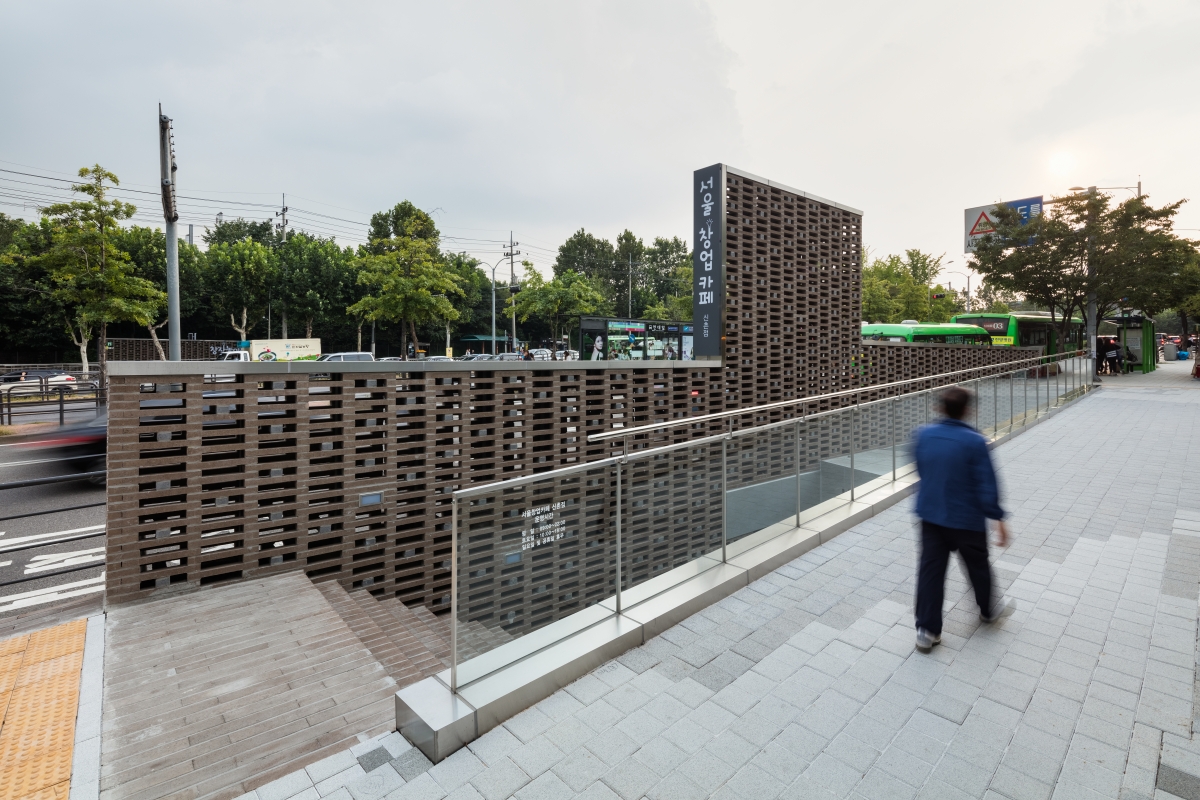
Creative Play Center_ The underground tunnel path that was built in front of Yonsei University in the 1970s is a place of which many people have forgotten. This was because numerous crossings were installed aboveground with the implementation of the central road system for buses.
Will the critical culture revive? Will the critical attitude continue to exist among architects? Or, rather, will the architects themselves survive? In this architectural situation where there is no ‘why’ but only ‘how’, will future architects take over the roles of the technicians and artisans of the middle ages? What is the reality of the public and private that are so preoccupied with finding solutions instead of proposing questions?
In this way, I’m reminded of both the ominous words of Vilém Flusser who claimed that the future intellectuals will either become artisans or like middle-age monks who cut all ties with the world, and the text of Nam June Paik who compared the digital screen with the stained glass of the middle ages. On the other hand, however, Agamben’s critique that the problem lies not with the fact that the world has become too secularized but that it has not been secularized enough hits home especially hard.
I’m aware of the recent discussions regarding the subject of evaluative power. The subjects that are generally composed of relevant intellectuals or professionals are an influential group of subjects in modern bureaucratic/corporate/university society to whom responsibilities don’t apply. This is also true in design competitions, architectural certifications, and the always-developing processes of various architectural examinations and technological certifications. The reality is that this relationship between the subject of evaluative power composed of professionals and the target of evaluation is now becoming a kind of an entertainment in itself. However, the professionals and the targets of evaluation are all equipped with the knowledge of ‘how’ but not of ‘why’; and even though the situation asks for them to be able to pick out the matter of their respective fields and contribute by offering their opinion, they are not aware of the context when context is more than important in these times. Instead they are so focused on solving their problems at hand, but I wonder for whom and for what are those solutions targeting.
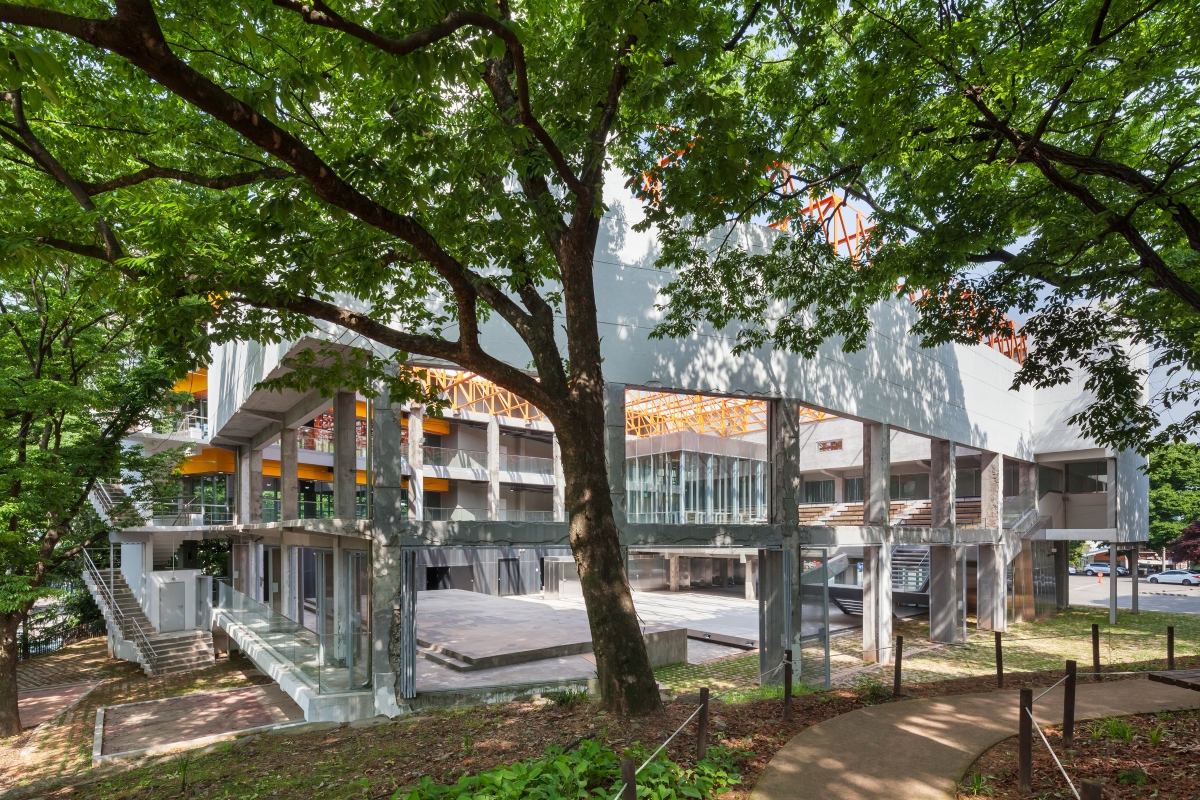
Gwangju Park Old Civic Center_ The remodeling contest invited 100 citizens as well as experts to conduct the screening.
In this situation, where everyone is so oblivious, is it correct to set the subject of interpretation? Also, can an intellectual, whether he or she turns out as a technician or not, function in this situation as a subject of comprehensive interpretation?
I think there is a need for the professionals or intellectuals to observe the masses carefully, since it is not the time of the mob, the people, or the citizens, but of the masses. Everyone from the president to a part-time worker is a part of the masses. Of course, a professional too is a part of the masses. Therefore, the masses may be nothing by itself, but there is nothing more powerful than the masses in contemporary society. The masses are not divided under bureaucratic districts or a national boundary, and while they have the power to completely decimate a certain situation or a region like a herd of locusts, they can also become an influential power across all social relationships in putting forward a problem. In front of the masses, professionals and their jargon must lay down their arms. The masses can have as much active power as they have passive power. While this situation is not exactly favourable to me as a professional myself, I felt that the delicate systemization of public debate in setting topics for debate is worth a try in this directionless situation, while it also makes me wonder if it is time for us to move beyond provoking or defending oneself by using cultural pluralism. Of course, I still admire and respect isolated groups and individuals who are carrying on with their intellectual practices like monks in a monastery or a firefly in a pitch-dark environment, as I believe that they can become the beacons of hope for the future.
In 2011, when I was part of a design competition for a remodeling project of the previous Gwangju Civic Center with Prof. Ah-Yeon Kim, who is a landscaping architect, I had a rather interesting experience. At that time, the singing competition programme ‘I Am a Singer’ was very popular, and Gwangju city decided to conduct an examination review in the style of this singing competition. It seemed silly in a certain way, as the examination was conducted not only by professionals but also by 100 invited citizens. Each citizen participant was given one vote, and they participated via a casting vote system when the scores were even. The atmosphere was dynamic, the government officials were tense, and the interest of the Gwangju residents increased exponentially. During the work, I couldn’t but consider those 100 citizens as the subjects of evaluation as I did the designs. It was a completely new experience, and all our professional knowledge had to be translated into everyday language for the citizens. Our design was picked by the citizens, and we were extremely moved. After being selected, however, when the citizens and the professionals were gone, we were left with the city officials to carry out an unpaid supervision regarding the construction, which gave us quite a bit of trouble. Unfortunately, however, in contrast from our early designs, the building was to be entirely taken over by the Park Management Office of Gwangju city in the end. I don’t even wish to recall the billed construction cost (its process and final look was covered in the June 2015 edition of SPACE).
It is truly important that the professionals and citizens continue to follow up with construction at all stages. Also, I think it is important to move on to consider citizens who have become a part of the region as a significant party in the design process. ‘Resilience by Design’, a design competition that was recently conducted in the US as a response to climate change may be a good example of how professionals and residents had come together in a design competition.
The DMZ Migratory Bird Town in Cheorwon County that I’m about to introduce is a project conducted on a town named Yangji-ri that was located within the Civilian Control Line of Cheorwon. It was a rather complex and difficult project. Our team was composed of various professionals (a landscape architect, an expert on migratory birds, an educator on the environment, a professional on regional vitalization, and a professional on regional branding) came together to conduct the project with local participation. As part of a cultural infrastructure facilities development project from the Ministry of Land, Infrastructure, and Transport and AURI, this was a multi-stage project that we and Cheorwon County had submitted and had been selected from the design competition. The residents at Yangji-ri were very enthusiastic and all team members participated actively. Thanks to our project masterplan and the results from activities such as local participation, we were selected as the second stage partner to begin with the working design. Towards the end of the design, we received a proposal for a Lounge Project Exhibition at Art Sonje Center, and our architectural process was also published as a book titled Migratory Birds Cooperative. Since our team members had flocked together like migratory birds, the book title felt quite appropriate. Moreover, the exhibition and publication offered good opportunities to gain interest from the government officials, local residents, and participants, considering all related parties including the residents had visited the exhibition. However, after having finished with all the working designs, the Civilian Control Line was removed and redrawn on the embankment of the Togyo Reservoir, which was our planned site and the sanctuary of migratory birds. There was no choice but to change the site to a closed-down school in Yangji-ri, and another course of difficult processes had to be repeated. The programme was changed to include a Visitor’s Center for observing migratory birds, a facility for bird protection, and an educational facility of natural habitats, and we finally arrived again at the working design stage. Then it turned out that interest in this facility had declined with the change in the leaderships of the county and Yangji-ri, and the atmosphere over the project had turned cold. It was a repetition and recurrence of unforeseen difficulties. Now, it is understood that there is new leadership in the county, and the project is regaining interest. This project began in 2010, and the DMZ Migratory Bird Town began in late 2013 with its design and was fully constructed in early 2016.
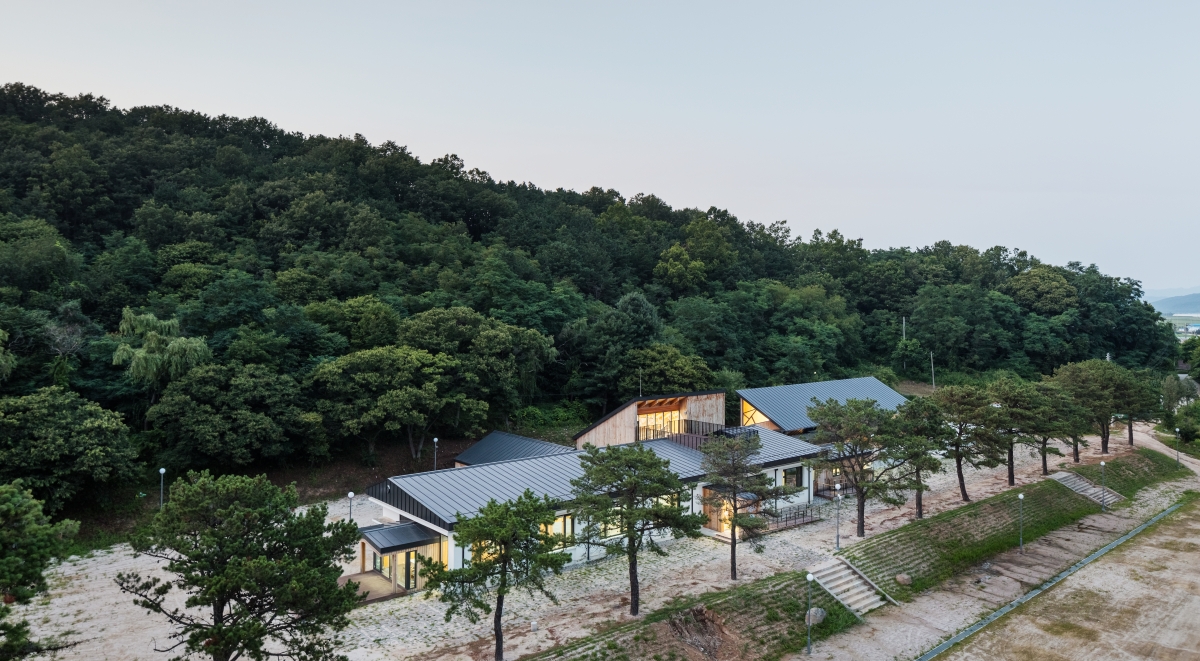
DMZ Migratory Bird Peace Town_ The closed-down Yangji-ri school used to be a small elementary school. With the intention to highlighting the abandoned school, all extension work was positioned towards the back.
How is the continuity of a project achieved?
It is fortunate that this facility is being well used, but it also makes me wonder how many facilities in the other parts of the country are being misused or left abandoned. Also, in the case of multi-stage projects, there is no continuity among the participants, and furthermore, the facility management or the subject user always changes. In such cases, the facilities either become altered or used in a strange way without any knowledge of the architectural space. The architect who creates the designs does not supervise how the buildings are being used, nor is there a post-design management scheme due to a lack of pricing standards. The representing government official changes multiple times from the planning stage to the end of the construction as well. Furthermore, since the planning subject (architect) keeps changing per stage due to the contract, the building may turn out to be something quite grotesque.
In this era of urban revitalization and low growth, multi-stage projects are necessary and extremely important. It has become even more significant to define who or what the subject of interpretation is and how its composition and progress can be conducted in this era of technical bureaucratism towards which we are heading. Of course, there will be other kinds of conflicts and oppositions throughout this process. It will all require a high level of prudence and wisdom. If it all comes to be nothing after all, I think that it would be better to go on a new path than to stick with the old.





